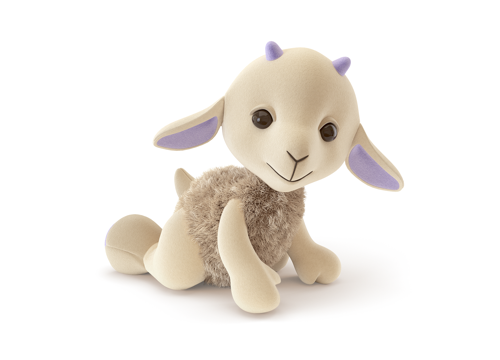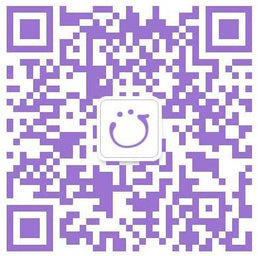Knowing when to stop breastfeeding and transitioning a baby from breast to bottle feeding can be rather straightforward, or a little more complex. It all comes down to the baby’s willingness to transition from sucking on the mother’s nipple to sucking on a bottle teat.
How To Wean Off Breast Feeding?
Some babies will happily suck on whatever is offered to them – the breast, a bottle, a dummy or even a sippy cup. Others are more discriminatory about what they attach their mouth to and only associate feeding with the breast. This of course makes things more challenging for mothers who, for all sorts of reasons, are transitioning from breast milk to formula.
When a baby has had early problems latching and sucking effectively at the breast, they may show the same behaviour when weaning off breastfeeding. Sucking on the breast, in comparison with sucking on a bottle teat, requires different sucking actions. Like any new skill, it can take time and practice for a baby to learn what’s involved.
How To Transition From Breastfeeding To Formula?
Your baby may face challenges when changing from breast to bottle feeding. Sometimes mothers are surprised by the ease of which their baby becomes accustomed to bottle feeding. Conversely, don’t assume it will be an easy process.
Try not to leave weaning off breastfeeding to the last minute! If you're going back to work, think about introducing the bottle ahead of time to avoid stress.
Tip 1: Start early – up to a month before returning to work isn’t too premature to begin the process of transitioning from breast milk to formula and offering a bottle.
Tip 2: Speak with your baby’s caregivers about your plans.
Tip 3: If you’re intending to express your breast milk at work, have a conversation with your manager about lactation breaks and clean places to express.
Breast To Bottle Feeding Tips
Tip 1: Offer expressed breast milk to start with in a bottle, rather than formula. Often it’s the taste of the formula which babies reject rather than the teat.
Tip 2: Offer your baby a bottle in their early months of life, once breastfeeding is well established. Some babies, if they’re already accustomed to sucking from a bottle, will be more receptive than babies who are first exposed to a bottle when older.
Tip 3: Ask another trusted adult to feed your baby the bottle. Breastfed babies strongly associate their mother with feeding and may accept the bottle more readily for someone else.
Tip 4: Offer bottle feeds when your baby is hungry and due for a breastfeed. Hunger is a powerful motivator for babies to feed.
Tip 5: Offer the bottle when your baby is calm, relaxed and receptive. Offer the bottle in a quiet room without distraction and noise.
Tip 6: To support the breast milk to formula transition, if you’re offering formula, make sure it’s comfortably warm and made up correctly. Follow the manufacturer’s recommendations for preparation.
Tip 7: Position your baby in your arms as if you are going to breastfeed them. Hold your baby in a similar position and consider your own comfort as well.
What To Do If Your Baby Rejects The Bottle?
Tip 1: You could consider temporarily stopping all breastfeeds if you’re offering both breast and bottle. For 24 hours or longer, express your breasts to maintain lactation. Then, when your baby is accepting the bottle, you could reintroduce breastfeeds, but only if you’re planning on combined feeding.
Tip 2: Keep trying, be patient and calm as your baby is weaning off breastfeeding and transitioning to their new way of feeding.
Tip 3: Start a feed by breastfeeding and when your baby’s initial hunger has been satisfied, take the nipple from their mouth and offer them the bottle.
Tip 4: Offer your baby their pacifier (dummy), when they’re calm, remove the pacifier and replace it with the teat.
Tip 5: Try a different formula to see if your baby prefers one taste over another. Avoid spending too much money and buying every formula on the market; one or two will be enough for a trial.
Tip 6: Stop offering the bottle for a few days and then try again. Sometimes babies get into the habit of rejecting the bottle and need some time to forget.
Ten Reasons For Changing From Breast to Bottle Feeding?
Whatever your reason is for transitioning, we're here to support you through this change! Here are just a few of the reasons why mothers shift from breast to bottle.
1. Some parents are just keen for their baby to drink from a bottle as well as breastfeed. They like the idea that if necessary, their baby will take a bottle.
2. For time away from each other. When a mother and her baby are apart, bottle feeding may be the only available alternative for babies who are too young to drink from a cup.
3. When a mother needs to take medication which is contraindicated with breastfeeding. If medication is only short term, one option is to express, discard the breast milk, and when the medication is stopped, resume breastfeeding.
4. When a mother and/or her baby are sick and breastfeeding is not possible.
5. A mother’s return to work when expressing is not possible.
6. When a baby self- weans and rejects the breast. This can be very disappointing for mothers who may be keen to continue to breastfeed for longer. If a baby has decided they don’t want to breastfeed, it can be very hard to persuade them to continue.
7. When a mother decides she’s had enough of breastfeeding. There doesn’t need to be a clear reason for deciding when to stop breastfeeding, it’s enough to just decide they don’t want to do it anymore. For reasons of personal freedom, some mothers just want to stop.
8. Planning for another baby. Whilst it’s possible to conceive and continue breastfeeding during pregnancy, some women don’t ovulate when they’re lactating.
9. Inadequate milk supply. Sometimes, despite doing all she can, a mother’s breast milk supply isn’t enough to meet her baby’s needs.
10. Painful breastfeeding. Some women experience cracked and painful nipples, recurrent mastitis, thrush and ongoing pain when breastfeeding. Pain is a strong motivator to quit.
Changing From Breast Milk to Formula Side Effects
All babies react differently when transitioning from breast milk to formula and sometimes it can take a few tries before finding the right formula for your bub and their tummy. Something you may notice when introducing a new formula is changes in their bowel movements, whether that’s smell, colour or texture.
For sensitive tummies, there are specialty formulas available like our Goats Milk Formula that are more gut friendly to support switching from breast milk to formula.
What Shouldn't I Do When Changing From Breast to Bottle Feeding?
Avoid: Forcing your baby to feed. Be sensitive to your baby’s feeding cues and follow their lead when it comes to feeding. If they’re pushing the bottle away, crying, closing their mouth firmly and turning their head from the bottle, these are all clear signs of rejection.
Avoid: Offering your baby the bottle too frequently. Aim for around 3-4 hours between bottle offerings so your baby is more likely to be hungry and willing to drink.
Avoid: Mixing expressed breast milk and formula in the same bottle. Expressed breast milk is more nutritionally complete and wastage best avoided.
Avoid: Spending a lot of money on different bottles and teats in the hope that one may work better than the other. Stick with one bottle and one teat and look for your baby’s hunger signs to encourage them to feed.
Avoid: Putting honey, sugar or any other sweet product on the teat or in the milk.
Avoid: Putting rice cereal or any other solid food in the milk. Keep solids and milk separate.




